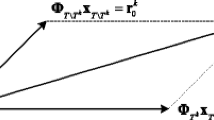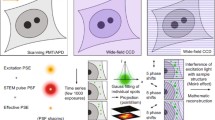Abstract
In this paper, a novel projection-based depth based on the Rayleigh quotient, Rayleigh projection depth (RPD), is proposed. Although, the traditional projection depth (PD) has many good properties, it is indeed not practical due to its difficult computation, especially for the high-dimensional data sets. Defined on the mean and variance of the data sets, the new depth, RPD, can be computed directly by solving a problem of generalized eigenvalue. Meanwhile, we extend the RPD as generalized RPD (GRPD) to make it suitable for the sparse samples with singular covariance matrix. Theoretical results show that RPD is also an ideal statistical depth, though it is less robust than PD.
Similar content being viewed by others
References
Cuevas A, Fraiman R (2009) On depth measures and dual statistics. A methodology for dealing with general data. J Multivar Anal 100: 753–766
Donoho DL (1982) Breakdown properties of multivariate location estimators. PhD thesis, Department of Statistics, Harvard University
Frank A, Asuncion A (2010) UCI machine learning repository. http://archive.ics.uci.edu/ml
Gao Y (2003) Data depth based on spatial rank. Stat Probab Lett 65: 217–225
Jörnsten R (2004) Clustering and classification based on the l 1 data depth. J Multivar Anal 90: 67–89
Kim J, Scott C (1992) Variable kernel density estimation. Ann Stat 20: 1236–1265
Liu RY (1990) On a notion of data depth based on random simplices. Ann Stat 18: 405–414
Liu RY, Parelius JM, Singh K (1999) Multivariate analysis by data depth: descriptive statistics, graphics and inference. Ann Stat 27(3): 783–858
Tukey JW (1975) Mathematics and picturing of data. In: James RD (ed) Proceedings of the international congress on mathematics, Canadian Mathematics Congress, Vancouver 1974, vol 2, pp 523–531
Vapnik VN (1998) Statistical learning theory, 1st edn. Wiley-Interscience, New York, 732 pp. ISBN 978-0471030034
Vardi Y, Zhang C (2000) The multivariate l 1-median and associated data depth. In: Proceedings of national academy of science, vol 97, pp 1423–1426
Zuo Y (2003) Projection-based depth functions and associated medians. Ann Stat 31: 1460–1490
Zuo Y, Serfling R (2000) General notions of statistical depth function. Ann Stat 28: 461–482
Zuo Y, Ye X (2009) Expd2d: Exact computation of bivariate projection depth based on fortran code. http://CRAN.R-project.org/package=ExPD2D, r package version 1.0.1
Author information
Authors and Affiliations
Corresponding author
Additional information
This work is supported by the NSFC Grant #60975038 and #60974124.
Rights and permissions
About this article
Cite this article
Hu, Y., Li, Q., Wang, Y. et al. Rayleigh projection depth. Comput Stat 27, 523–530 (2012). https://doi.org/10.1007/s00180-011-0273-1
Received:
Accepted:
Published:
Issue Date:
DOI: https://doi.org/10.1007/s00180-011-0273-1




